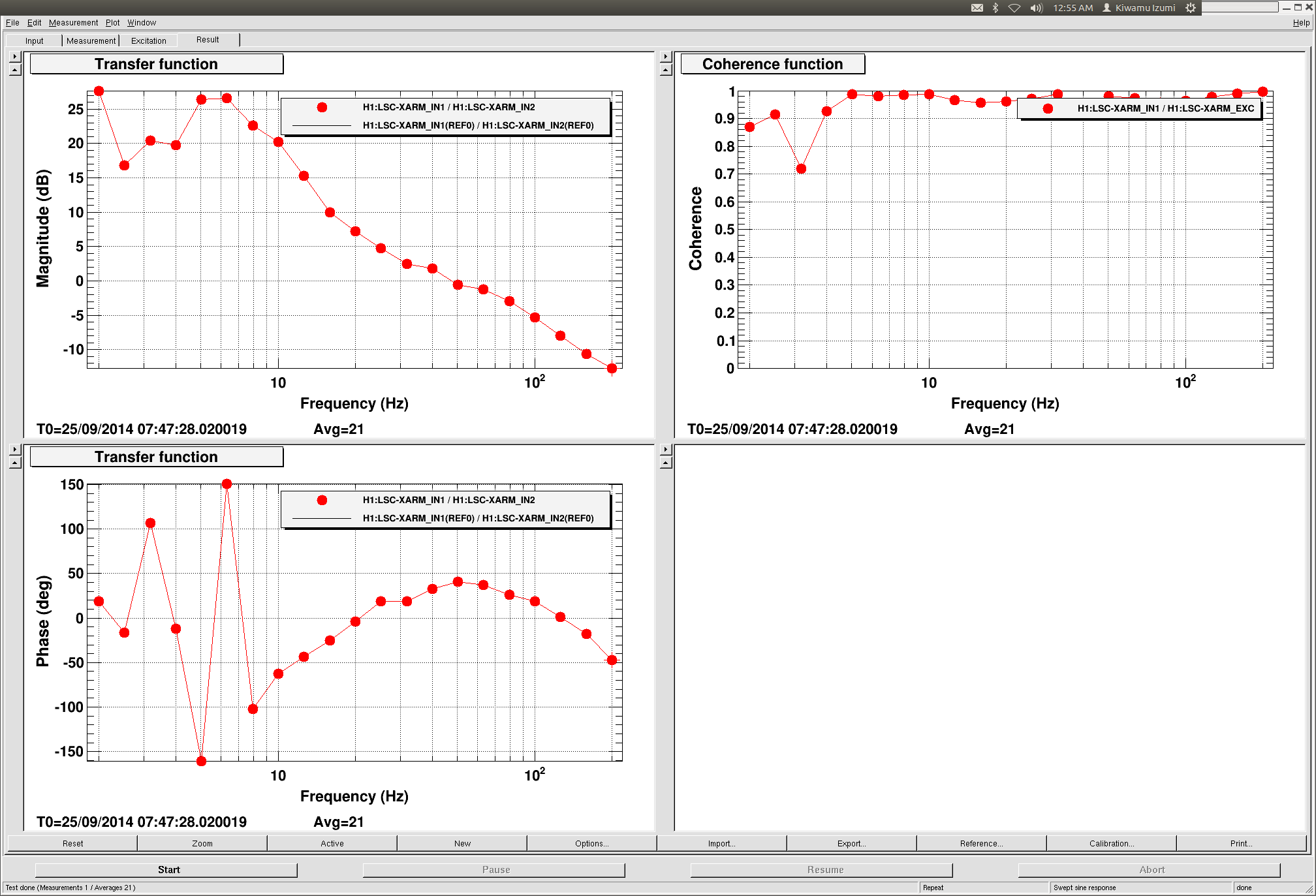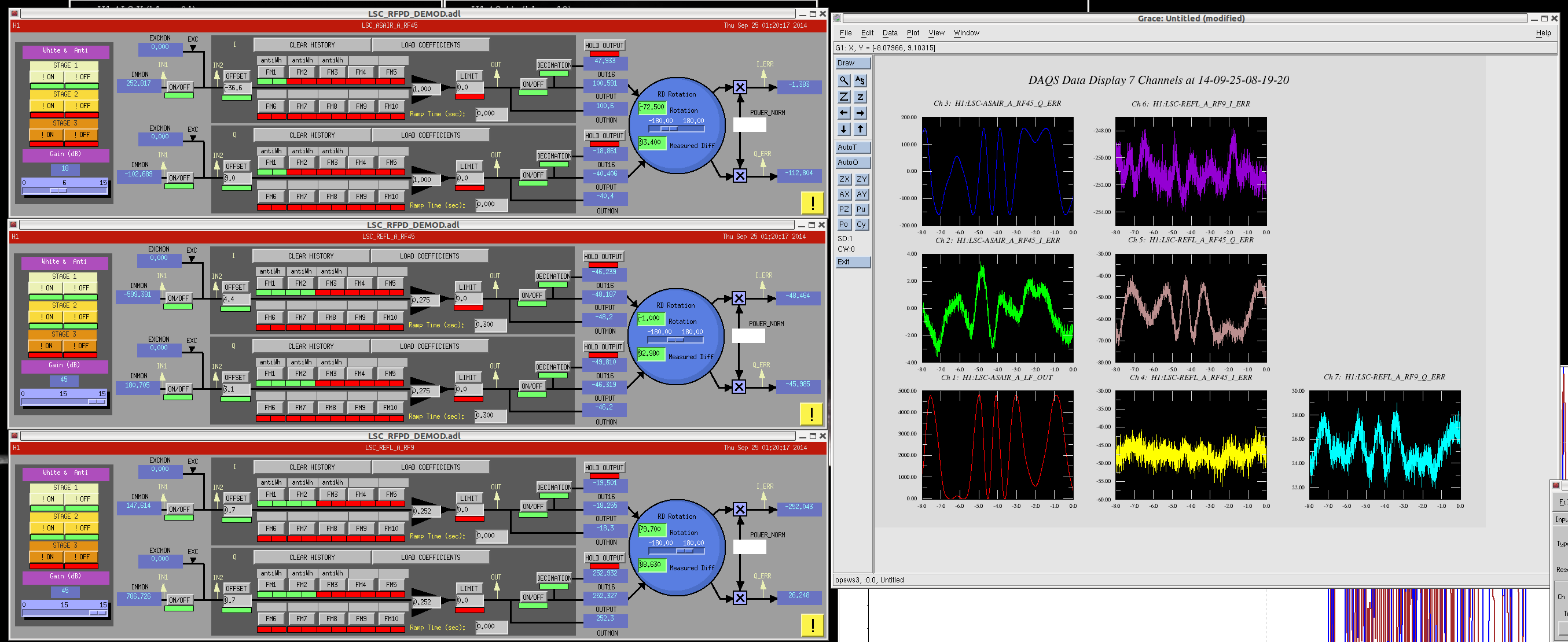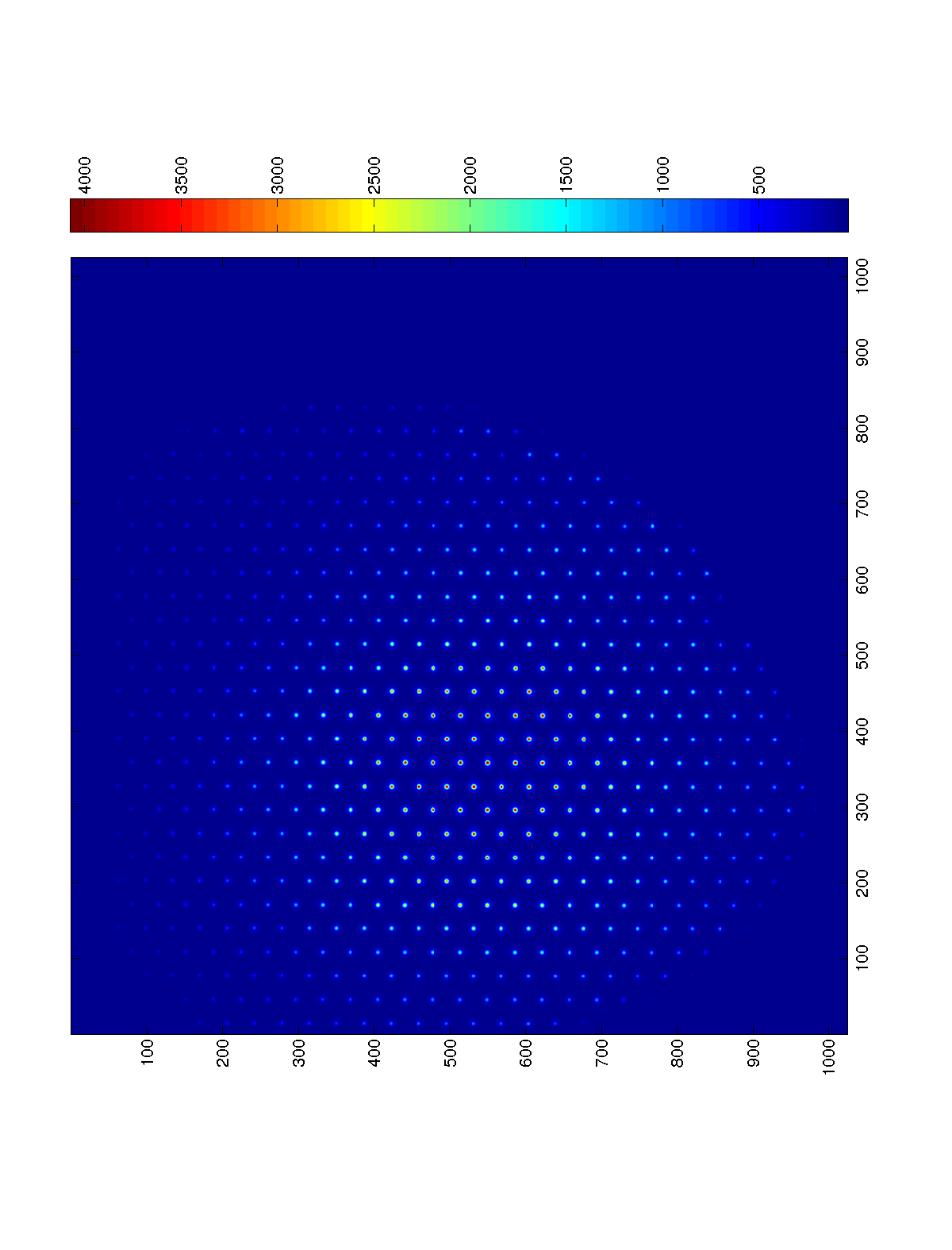Summary of the activities from the last night:
- The main PSL light was locked to the X arm. The servo needed some tune-ups.
- Subsequently, IM4 and PR2 were aligned to the new ITMX angle while keeping the infrared locked on the X arm.
- The in-air POPAIR was realigned again because the new alignment let the POP beam fall off from the diodes.
- I confirmed that the PRMI could still lock under this new alignment. The RF18 build up in POP was 150 uW at highest.
- I let the simple Michelson freely swing. This is a part of the modulation depth study.
Below are some details:
(X arm locking)
The PSL light was locked to the X arm by feeding the signal back to MC2. This configuration gives us a situation where we can steer IM4 and PR2 such that the input pointing matches the cavity axis of the X arm. In prior, I moved the bounce and roll filters in MC2 from ISCINF to M2_LOCK_L such that the notches are applied only to the M2 stage. This is a suggestion from Ryan of LLO in order for a HSTS suspension to avoid ringing up the modes without sacrificing the length control bandwidth. This seemed to help the stability a lot. I did not see a too-prominent peak at these bounce and roll frequencies when it was locked. Good.
I followed the procedure described in a previous alog (alog 13747) except for the sensor. This time I used ASAIR_RF45_I instead of a REFL detector because ASAIR seemed to have a larger signal level without extra whitening amplifications. Also I tailored the demodulation phase to -98.6 deg which maximized the in-phase signal. The LSC gain needed to be 0.01 in this case which gave a UGF of 50 Hz. Measuring the open loop transfer function, I found that the phase margin at around the UGF was about 10 deg or so. So I put a lead filter in FM5 of LSC_XARM to bring the phase up by approximately 30 deg around the UGF. The measured open loop with the lead filter on is attached below.
Though, I still don't understand why the phase had been so bad in the first place. According to the digital filters we have, the phase between 40 and ~200 Hz should be about 90 deg as it falls as 1/f. But the open loop looked falling as 1/f2.
(POPAIR realignment)
After I touched up IM4 and PR2 (mainly in pitch), I could not get reasonable signals from both POPAIR_A and _B at all. I went to ISCT1 and checked the beam in the path. Indeed the beam was off from both diodes. Similarly to the other day (alog 14055), I could not precisely evaluate the beam position on the top periscope mirror. The beam was too high on the bottom periscope mirror while the horizontal looked centered. I steered the top periscope mirror and realign the down-stream again. Also, I moved the POP camera position to a point close to the last steering mirror in order to get a bigger beam image.
After the realignment, I did not see an apparent sign of clipping in the POP beam image. Good.
(Michelson free swing)
See the attached below:
Note that the incident power on IMC at this point was 10 W.


















